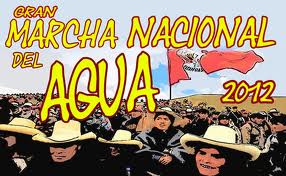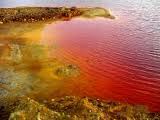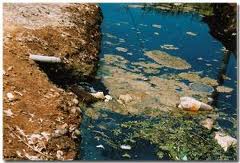El cambio climático en el Perú está afectando la disponibilidad de agua en la costa y parte de la sierra, y ya se ven surgir conflictos alrededor de este recurso. En Cajamarca el movimiento contra la Mina Conga se sustenta en la defensa del agua de las lagunas de las partes altas de Celendín, en el caso de Tía María (al sur del país) este fue el tema y será necesario desalinizar agua de mar.

Las regiones de Arequipa y Cusco, como las de Ica y Huancavelica, Piura y Lambayeque, Moquegua y Puno, tienen diferencias respecto del uso de lagunas y desvío de cauces en los límites de sus respectivas jurisdicciones. En Ancash los problemas en torno a las aguas de la laguna Parón que se surte del deshielo de la cordillera, es materia de discusión entre campesinos y productores de energía eléctrica. La mayoría de ríos se encuentran con altos índices de contaminación como resultado del uso de fertilizantes, vertimientos de residuos mineros, industriales y domésticos, de modo que en muchos casos “el agua que no se puede beber hay que dejarla correr” o sufrir las consecuencias. A esto se suman los pasivos ambientales de la nueva y vieja minería que como en Hualgayoc o Cerro de Pasco, envenenan lentamente las aguas y las tierras.
El agua es un bien escaso en la vertiente occidental del Perú y no puede desperdiciarse, el uso de la napa freática se acelera y con ella se afectan reservas sin que las autoridades interpongan medidas efectivas para su buen manejo. Es el caso del valle de Ica que debe recomponer los patrones de uso de este recurso y establecer alianzas con las partes altas de la región vecina de Huancavelica para asegurar el futuro de su principal actividad económica, la agricultura.
La contaminación es un indicador de la importancia que nuestra sociedad le da a las pocas aguas con las que cuenta la región en la que vive la mayor parte de la población del país (52%). En este marco resulta importante el llamado de atención del Colegio de Ingenieros del Perú que tomando como punto de partida los estudios hechos por el Ministerio del Ambiente entre el 2009 y 2010, en las cuencas y ríos de:
• Cuenca del Río Chili
• Cuenca del Río Mantaro
• Cuenca del Río Rímac
• Lago Titicaca
• Bahía El Ferrol
• Río Chillón
• Río Vilcanota
• Río Santa
• Río Madre de Dios y
• Río Hualgayoc en Cajamarca.


Pronunciamiento del Colegio de ingenieros:

CAPÍTULO DE INGENIERÍA AGRONÓMICA Y ZOOTECNIA
COMUNICADO CIAZ Nº 03-2012
ANTE ESTA INFORMACIÓN PÚBLICA, TENEMOS LAS SIGUIENTES INTERROGANTES:
• En el país, desde hace mucho se vienen realizando “diagnósticos” muy bien elaborados, que identifican problemas, causas, entre otros, relacionado a los recursos suelos, agua, aire, entre otros ¿Cuántos diagnósticos se han realizado en las últimas dos décadas en estos temas? ¿Cuántos recursos económicos se han invertido en dichos diagnósticos? ¿De cuántos diagnósticos, dispone el sector público, como ambiente, agricultura, producción? ¿Cuántos diagnósticos han realizado las universidades públicas, en estos temas, como las principales- Universidad Nacional Agraria La Molina, Universidad Nacional Mayor de San Marcos, Universidad Nacional de Ingeniería, Universidad Nacional Federico Villarreal, Universidad Nacional del Callao?
¿Cuántos planes de recuperación existen, de acuerdo a los diagnósticos realizados, en relación al suelo, agua, aire en las principales actividades económicas (minería, pesca, etc)?
¿Cuántos diagnósticos existen por un mismo tema?
¿Cuál es el presupuesto para “diagnósticos” y “estudios” este año?
• Se han identificado 41 vertimientos industriales y mineros para el Río Rímac y 21 vertimientos de carácter doméstico, casi 19 millones de metros cúbicos por año en aguas residuales, 22 botaderos de residuos sólidos y 40 pasivos mineros. ¿Cuándo pasamos a lo largo del Río Rímac, acaso no lo vemos y no sabemos que se encuentra altamente contaminado desde hace mucho, de un color irreproducible, donde no crece ningún pececillo ni anfibios u otros y dónde no habría quien se atreva a tomar un vaso de esa agua? ¿Por qué no se han tomado medidas, con las evidencias de contaminación que disponen las instituciones públicas y privadas? ¿Por qué no se han denunciado por delitos ambientales a los que han causado y causan tamaña agresión ecológica a la fuente de agua que alimenta a todos los que habitan la capital de la República? ¿Cuál es el impedimento para actuar de acuerdo a ley?